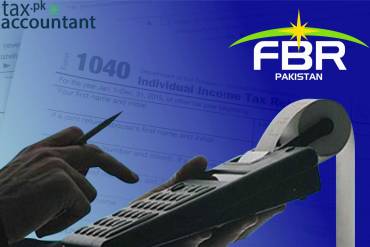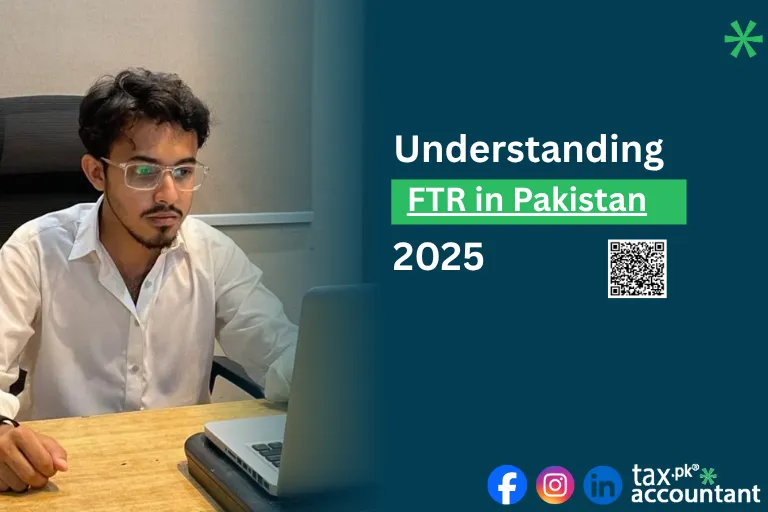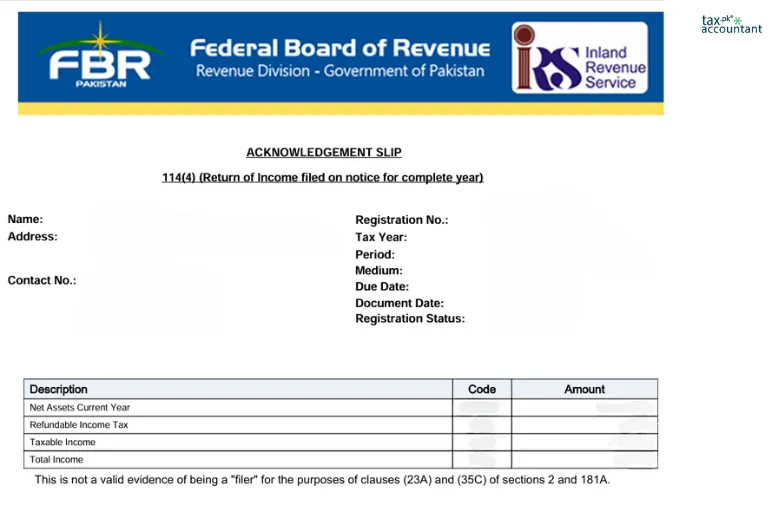The Federal Board of Revenue (FBR) has introduced important guidelines and amendments to Section 116(3) of the Income Tax Ordinance, aimed at enhancing transparency and compliance in the filing of foreign income and assets statements. These changes are crucial for taxpayers to understand their obligations and the procedures involved. Below, we outline the key points of these guidelines to assist taxpayers in navigating their responsibilities.
Introduction of Section 116A
To provide clarity on the requirements for filing foreign income and assets statements, the FBR has introduced Section 116A. This new section is designed to ensure that resident individuals accurately report their foreign income and assets, thereby fostering a culture of compliance and transparency.
Filing Requirements
Under Section 116A, the filing requirements are clearly defined:
- Who Must File: Every resident individual with foreign income of USD 10,000 or more, or foreign assets valued at USD 100,000 or more, is mandated to file a foreign income and assets statement. This requirement applies to both individuals earning foreign income and those holding significant foreign assets.
- When to File: The foreign income and assets statement must be submitted alongside the annual income tax return. It is essential that the statement is verified in the prescribed manner to ensure its authenticity and accuracy.
Contents of the Statement
The foreign income and assets statement must include comprehensive details, ensuring that all relevant information is captured:
- Foreign Assets and Liabilities: Taxpayers are required to report the total value of their foreign assets and liabilities as of the last day of the tax year. This includes properties, bank accounts, and investments held outside the country.
- Transfers: The statement must detail any foreign assets transferred to another person during the tax year, including the consideration received for such transfers. This provision aims to prevent tax evasion through asset transfers.
- Income and Expenditure: Taxpayers must provide complete particulars of foreign income and expenditure derived during the tax year. This includes not only the income earned but also any expenses incurred in generating that income, ensuring a clear picture of the taxpayer’s financial situation.
Commissioner’s Authority
The FBR has empowered the Commissioner to enforce compliance effectively:
- Issuing Notices: The Commissioner has the authority to issue written notices to individuals who are required to file a foreign income and assets statement but have failed to do so. These notices will specify the deadline by which the statement must be submitted, thereby providing a clear timeline for compliance.
Penalties for Non-Compliance
To underscore the importance of adhering to these guidelines, the FBR has established specific penalties for non-compliance:
- Penalty Details: Failure to furnish a foreign income and assets statement by the due date will result in a penalty of 2% of the foreign income or the value of the foreign assets for each year of default. This penalty is now incorporated into the Table in Section 185 of the Income Tax Ordinance, emphasizing the serious nature of compliance.
Amendments to Related Sections
To ensure a seamless integration of the new requirements:
- Section 118: This section has been amended to include references to the foreign income and assets statement under Section 116A. This change ensures that all related provisions are aligned and that taxpayers are aware of their obligations.
- Overall Tax Return Filing: The requirement to file the foreign income and assets statement has been integrated into the overall tax return filing process, simplifying compliance for taxpayers.
Effective Date
The guidelines and amendments to Section 116(3) took effect on July 1, 2020. From this date forward, compliance with Section 116(3) necessitates notification to the Commissioner in the prescribed format and manner.
Automation Initiatives
In line with its commitment to improving the taxpayer experience, the FBR is actively pursuing automation initiatives:
- Automation: The FBR is exploring the potential for automated computation of tax liabilities through the Iris system. This innovation aims to streamline the filing process and reduce the administrative burden on taxpayers.
Looking Ahead
The FBR’s guidelines for Section 116(3) of the Income Tax Ordinance highlight the critical importance of transparency in reporting foreign income and assets. The introduction of Section 116A, along with specified penalties for non-compliance, reflects the FBR’s commitment to ensuring that all resident individuals meet their reporting obligations. By understanding these guidelines and taking proactive steps to comply, taxpayers can avoid penalties and contribute to a more transparent and accountable tax system.For more detailed assistance and professional guidance on complying with these requirements, contact TaxAccountant.pk Tax Consultants. Our expert team is dedicated to helping you navigate the complexities of tax compliance efficiently and effectively.















One thought on “Maximize Transparency: FBR’s Game-Changing Guidelines for Section 116(3)”